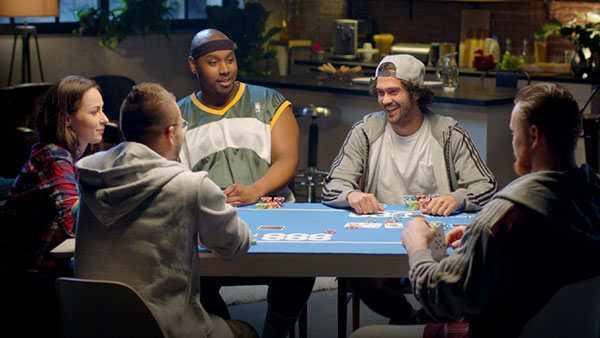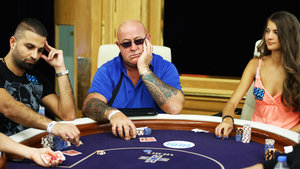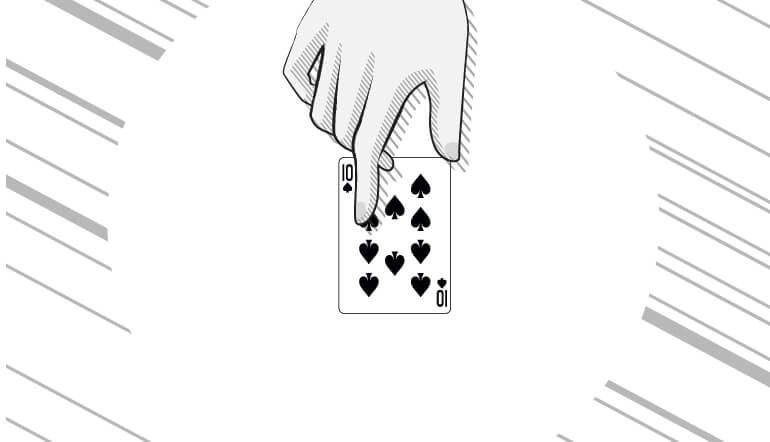Poker statistics are incredibly important, particularly among players who are serious about the game. There are poker stats for pretty much every aspect of the game, including the number of entrants in a tournament, the limits, the buy-in amounts, poker hand statistics, and much more. Poker experts readily agree that poker tracking software – when used correctly – can have an outsized impact on your performance.
It may come as a surprise to regular casino players, but many poker pros keep detailed logs of their online poker statistics. Poker is a relatively easy game to learn, but an incredibly challenging game to master.
Poker pros across the board agree that statistics have an important part to play in the poker world. Perhaps we should backtrack a bit and define precisely what poker statistics are, and why they are important before playing poker tournaments, cash games or freerolls.
‘Poker statistics deals with a branch of mathematics that is involved with the collection and processing, analysis and interpretation of numerical data.’
Poker statistics are different to poker probabilities. There are notable overlaps between poker statistics, poker odds, and poker probabilities, but the statistical component means something different vis-a-vis the collection and analysis of data.
The world's best online poker players and live poker players routinely collect data, interpret that data, and then implement effective online poker strategy to perform at the highest level.
POKER HANDS STATISTICS
Starting hands are incredibly important in the game of poker. The stronger your starting hand, the greater your odds of winning. The strongest possible starting hand is an Ace-Ace combination which gives you an 85% chance of winning.
The weakest possible hands are the 2-7 (37%), 2-6 (37%), 2-5 (37%), 2-4 (36%), and 2-3 (35%) hands. Players tend to have better odds of winning, with the following card combinations: Ace-Ace (85%), King-King (83%), Queen-Queen (80%), Jack-Jack (78%), 10-10 (75%), 9-9 (72%), 8-8 (69%), 7-7 (67%), 6-6 (64%), and 5-5 (61%).
Any hand combination with an Ace and the following cards: Ace-King-Queen-Jack-10-9-8-7-6-5-4-3 offers a winning probability of at least 60% +. The worst hands include Deuces (2s) and low-ranking number cards (excluding 2s).
As far as poker hand statistics go, you can consider yourself in the green zone (good to go) with high-ranking card combinations. Naturally, this is a small component of all the cards that can be dealt in poker. That's why players are encouraged to only play premium starting hands.
WHAT ARE THE BEST & WORST STARTING HANDS IN POKER?
The experts are always ready to offer some useful poker tips. For example, it’s really important to know the strength of your hand in every game you play. The best starting hands are ones that you can play in any position and they have great odds of paying out.
These include 7-7, 8-8, 9-9, 10-10, Jack-Jack, Queen-Queen, King-King, Ace-Ace, Ace-King, Ace-Queen, Ace-Jack, Ace-10, King-Queen, King-Jack, King-10, Queen-Jack, Queen-10, Jack-10, Jack-9, 10-9. Avoid the unplayable hands at all times.
These include: Queen-2, Queen-3, Queen-4, Queen-5, Queen-6, Queen-7, Jack-2, Jack-3, Jack-4, Jack-5, Jack-6, 10-2, 10-3, 10-4, 10-5, and 9-2, 9-3, 9-4, 9-5, 8-2, 8-3, 8-4, 8-5, 7-2, 7-3, 7-4, 6-2, 6-3, 6-4, 5-2, 5-3, 4-2, 4-3, and 3-2.
WHAT ARE THE MOST IMPORTANT ONLINE POKER STATISTICS TO KNOW?
Many greenhorns struggle with poker stats. The numbers can be intimidating, and difficult to interpret. Terms like Pre-Flop Raises, Post-Flop Aggression Frequency, Voluntarily Put $ In Pot are important for expert poker players. Let's briefly examine each of these poker stats to gain a better understanding of them:
Pre-Flop Raises – The Pre-Flop stage characterizes the period of play before the first 3 community cards have been dealt. Aggression is reflected by a high number in the Pre-Flop Raise statistic. Great poker players are aggressive in the Pre-Flop stage. Weak poker players tend to call more often than they raise. Experienced poker players typically fold the majority of starting hands they are dealt, or alternatively will raise in the Pre-Flop stage. If you prefer not to raise, it's better to fold. Poker experts advise against calling in the Pre-Flop stage hoping that the Flop will work out in your favor.
Post-Flop Aggression Frequency - This refers to the frequency with which you play in the Post-Flop phase of the game. As this number increases, so too does your aggressiveness. Poker stats indicate that weak players are passive in the Post-Flop stage of the game, often checking and calling. Great poker players are adept at aggressive play in the Post-Flop stage.
Voluntarily Put $ in Pot (VPIP) – Here's an interesting poker statistic that many great players look at. This measures the rate at which players put money in a hand before they've seen the Flop. The keyword here is voluntarily. When you pay the Ante, the Big Blind, and the Small Blind, these are not considered voluntary bets – they are mandatory. Every time you call or raise in a hand, you are voluntarily putting $ in the pot.
Generally, a healthy VPIP number ranges between 15% – 20%, indicating that you are a tight player. However, if you’re a poker greenhorn, that ideal figure tends towards 15%. Then there are the poker greats who have VPIP numbers in the region of 20% – 27%. Expect those numbers to rise markedly in 6-Max Poker Games, and go even higher in Pot Limit Omaha (PLO) contests.
Other important online poker statistics include the Unopened Pre-Flop Raise (based on a player's position at the table), which allows you to track play by evaluating a range of hands for each position for that player. It's equally important to understand poker stats relating to Blind Stealing. Players need to know how to attack the blinds, how to defend the blinds, and how to plug leaks in their game.
Other more complicated options include 3-Betting and 4-Betting. The stats for these actions indicate how often a player makes Pre-Flop raises with other players re-raising. A 4-bet occurs when a player re-raises a 3-bet. Poker stats are also available for Continuation Bets where players raise on the Pre-Flop stage and then place a bet on the Flop, followed by Check Raising, Squeeze Bets, and Float Bets.
TEXAS HOLD’EM POKER STATISTICS
Texas Hold'em is the undisputed king of the poker ring. It is adored by millions of poker players around the world in a live game format, and in online poker games too. Let's take a look at some of the most important poker statistics for Texas Hold’em.
• The odds of being dealt premium poker hands comprised of Ace-Ace, or King-King, Queen-Queen, or Ace-King suited are typically are as low as 2.1%. If you wait to get dealt a premium hand like this, chances are you'll be sitting out 98 games of every 100 that you play. Remember that pocket jacks – fishhooks – are not a great hand Pre-Flop. There is a 52% chance of better cards being revealed on the Flop – so beware.
• The odds of your pocket cards pairing up with cards on the Flop are approximately 32.43% – that's almost 1 in 3.
• Suited cards don't necessarily improve your chances of winning – so don't play them just because they're suited. They only improve your winning chances by 2.5%.
• If you are 1 card shy of a Flush after the Flop, chances are that you will make your hand 1 in 3 on average (34.97%).
• Once the fifth and final community card is dealt in Texas Hold'em – The River – you can expect a 50% chance of making a pair.
• Your odds of forming Three of a Kind if you already have a pair are approximately 7.5:1. This means that you should be cautious when holding low-ranking pairs.
• By the Turn, you may find yourself needing two specific cards to win. Your odds of getting precisely those cards on the Turn and River are just 0.3%. If you like enough to hit a lucky draw on the Turn, your chances of hitting the specific card on the River goes up to 4.55%
• Suited Connectors are often regarded as premium cards – better than pocket rockets – and they offer great possibilities for forming a Straight or a Flush. If you’re holding a pair of Aces, your chances of winning are really high at 80%.
• Chasing a Full House? If you have two pair on the Flop, you have a 16.74% chance of hitting a Full House by the River. But if you have Three of a Kind on the Flop, your chances of hitting a Full House by the River rise to 33.4%.
• Chasing a Gutshot? Perhaps an Inside Straight Draw? If you are, you should rethink your poker strategy. Online poker players should remember that just 9% of these hands materialize. Given that there are just 4 cards to a Straight, don't bet too much on these hands.
• If one player has two Over-Cards and another player has a pocket pair, it’s pretty much a coin-toss who wins. If the over-cards are suited, the odds will change somewhat. In this case a suited pair has a 54% chance of winning, and the odds are 57% if the pair is not suited.
POKER OUTS AND HOW THEY IMPACT YOUR ODDS OF HITTING A HAND
Poker outs are unseen cards that will improve your hand when they are drawn. In other words, they help you to win. The more you know about the poker outs, the better positioned you are for victory. If you're playing online poker and you've drawn 4 x Hearts, there are 9 poker outs to make a Flush.
There are 13 hearts in the deck, including 2, 3, 4, 5, 6, 7, 8, 9, 10, Jack, Queen, King, and Ace. Since you have already identified 4 of them, that leaves just 9. Let's briefly take a look at a scenario where the number of outs ranges from 15 – 20, and we examine the Flop to Turn, Turn to River, and Flop to River.
Probability also allows players to calculate important poker statistics like breakeven points and pot odds. Your breakeven point on a zero-equity bluff is a measure of how frequently a bluff is required to win a pot, ignoring pot equity. It’s a really good idea to conduct research of poker psychology before attempting to use the bluff as a winning online poker strategy.
Pot odds are different to the odds of hitting. Pot odds are a reference to the percentage of the entire pot we would be betting on a call. Let’s round out our poker statistics foray with some interesting numbers about successful players.
According to general poker statistics (not a scientific study) just 5 of every 100 poker players are winners – that's 5%. With the right training, perseverance and lots of practice, you can really improve all your own poker statistics and become a high-impact player too!









